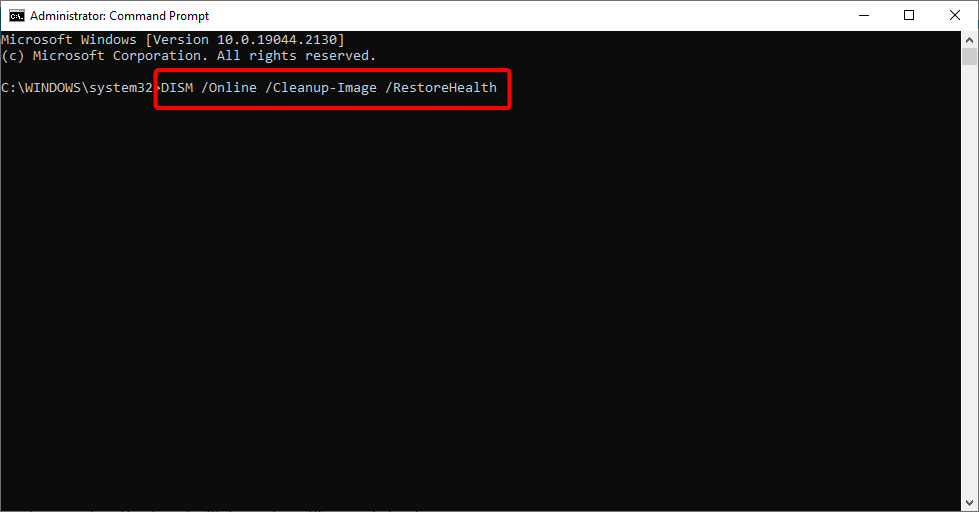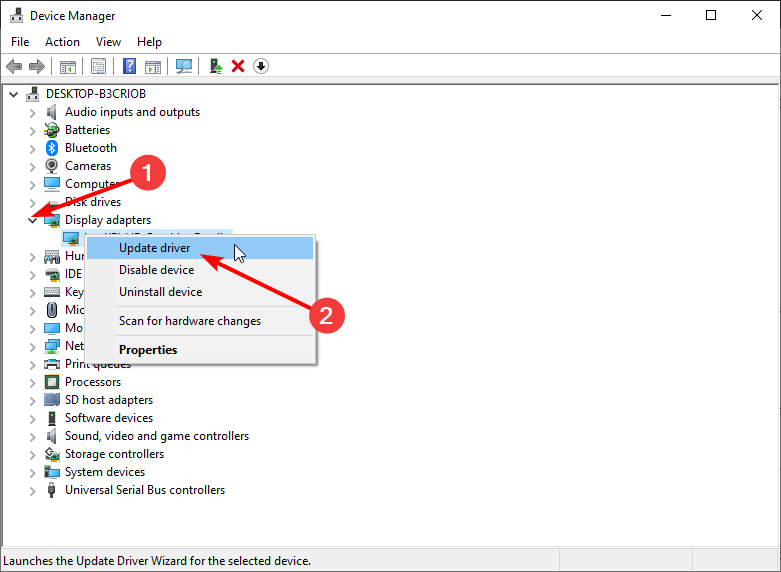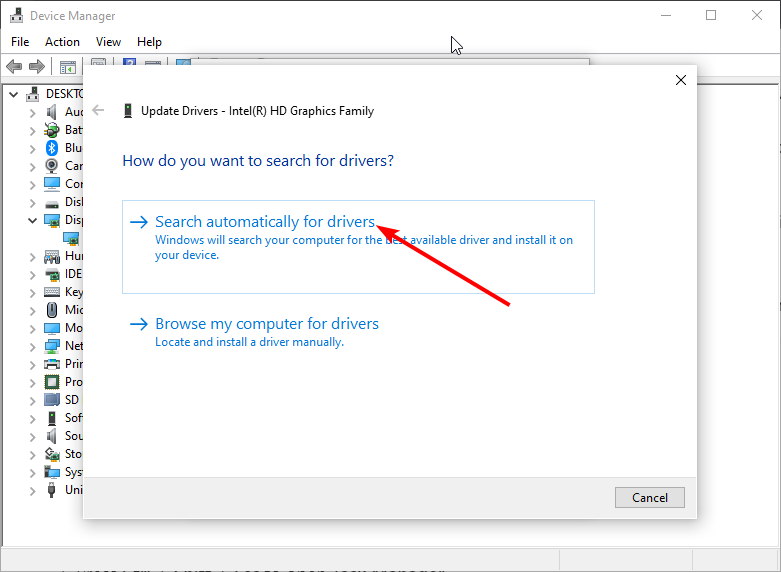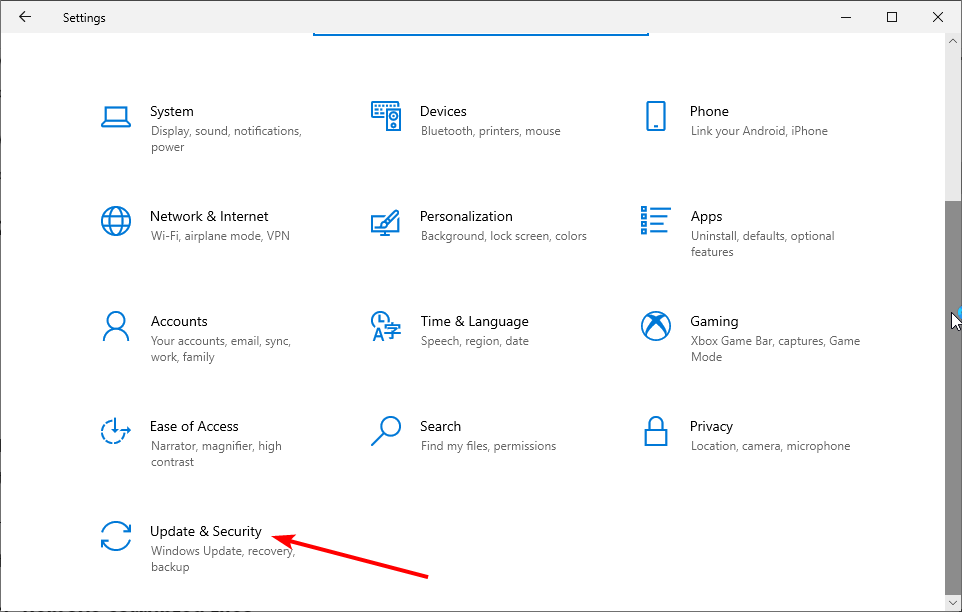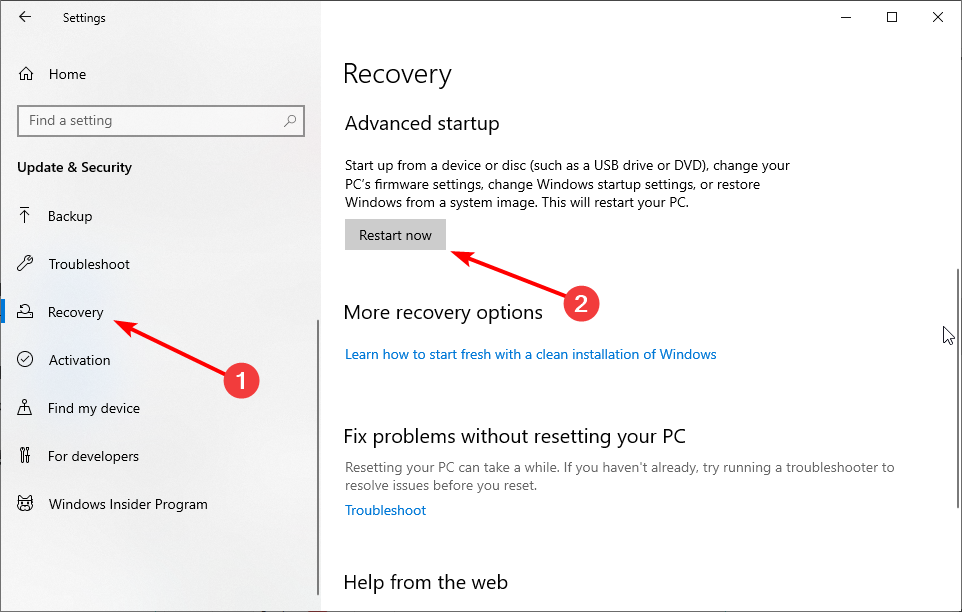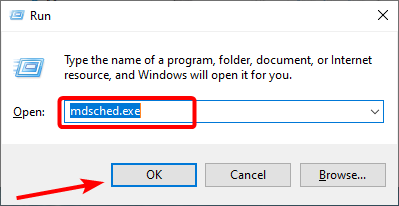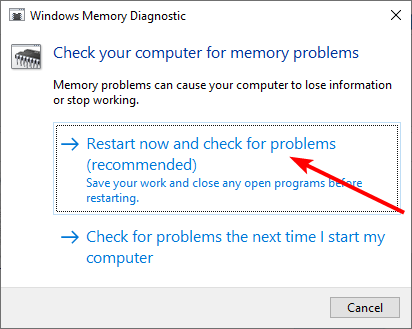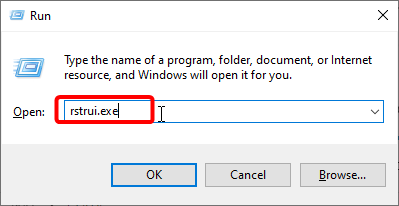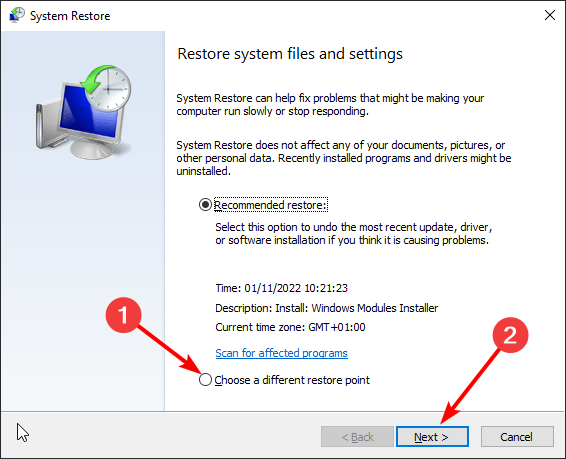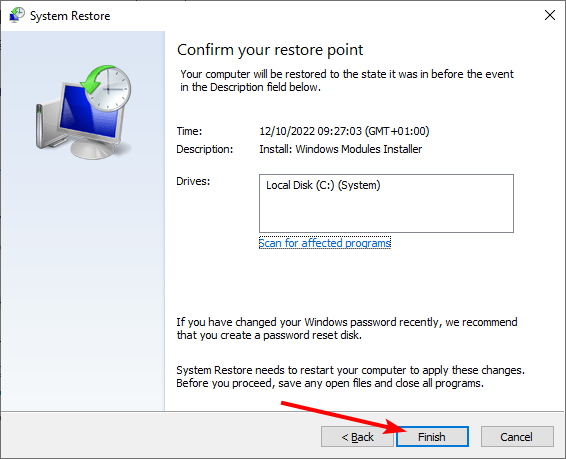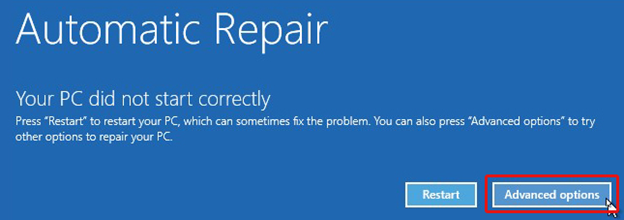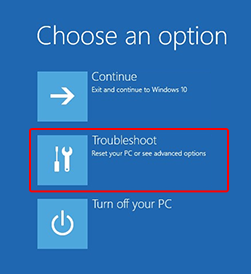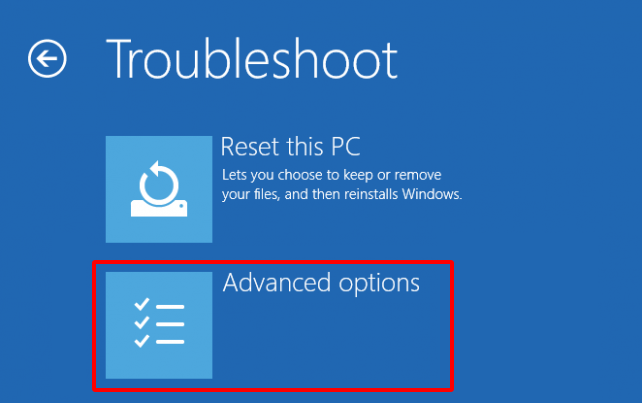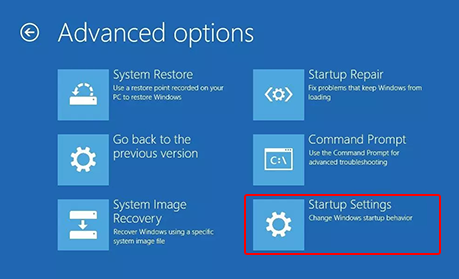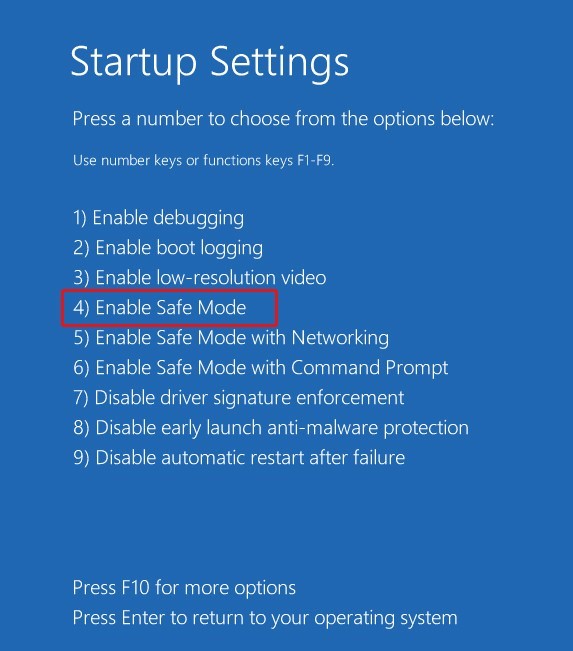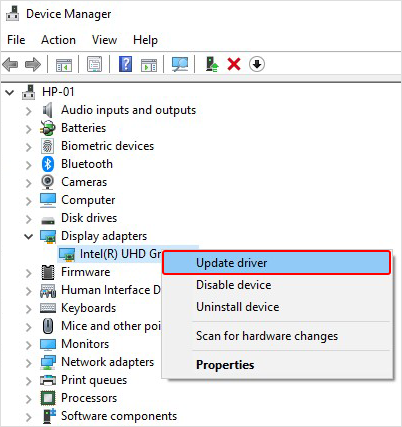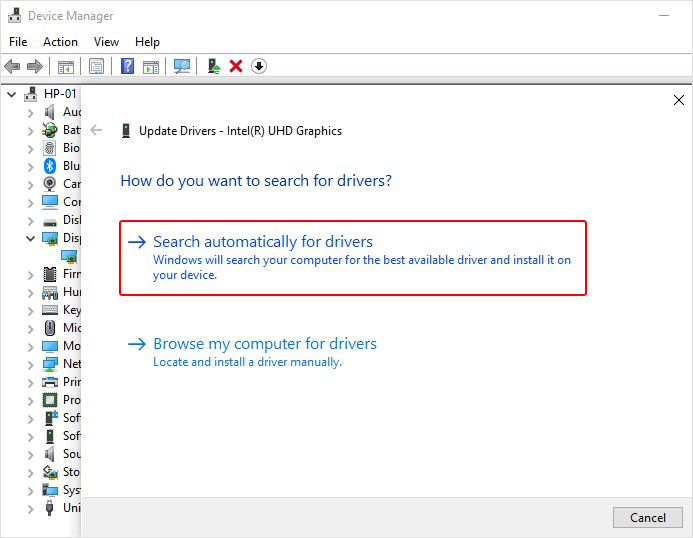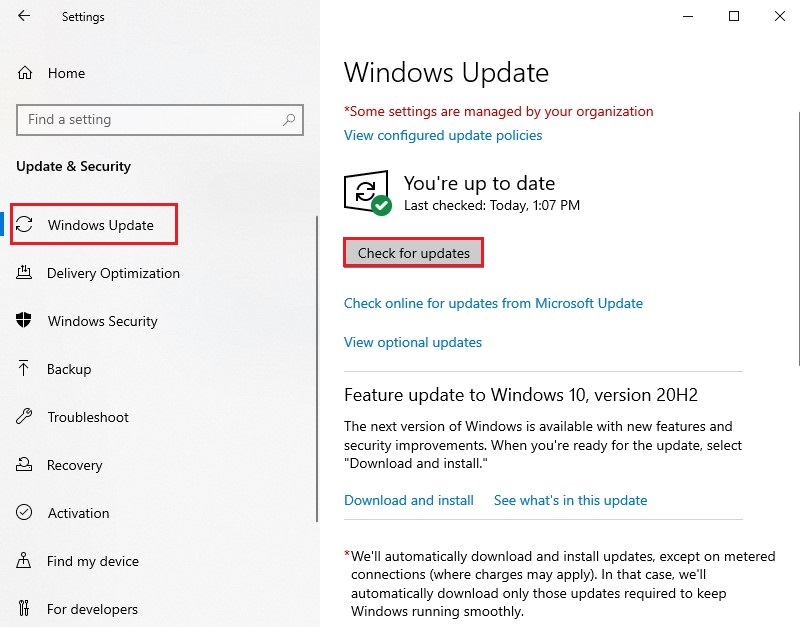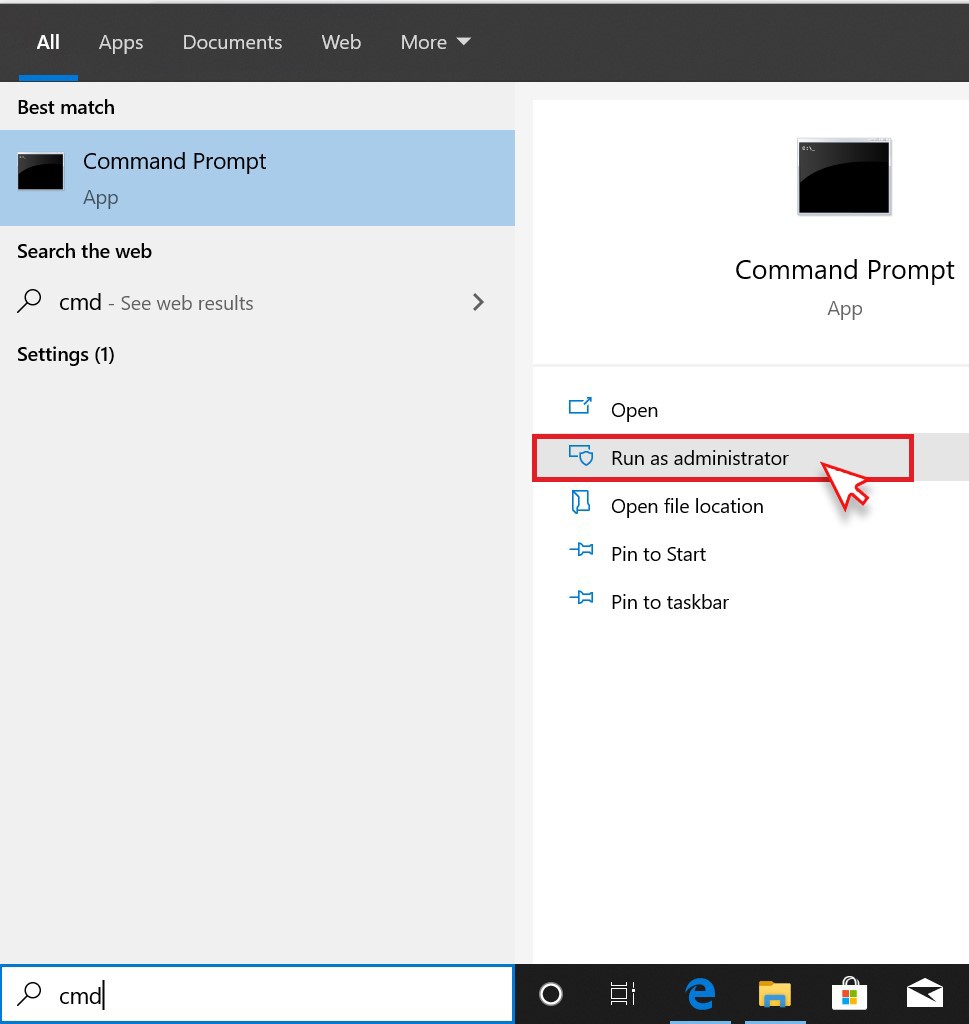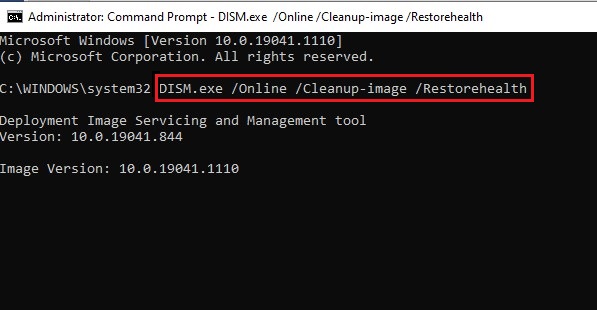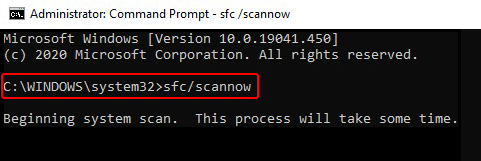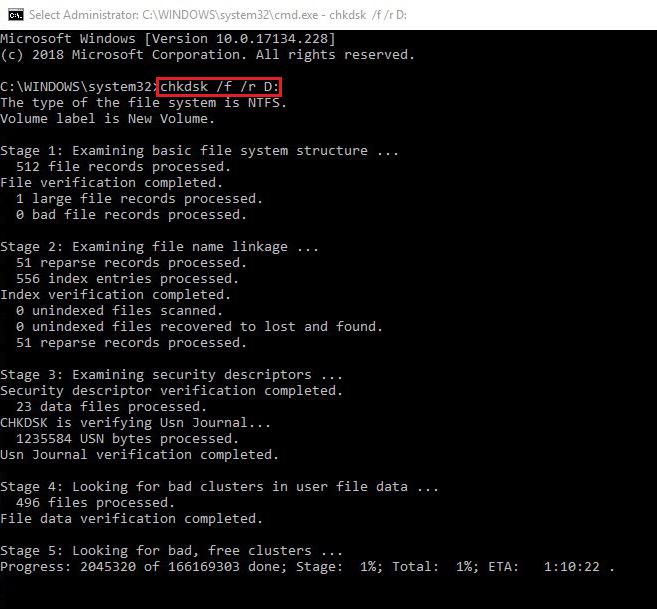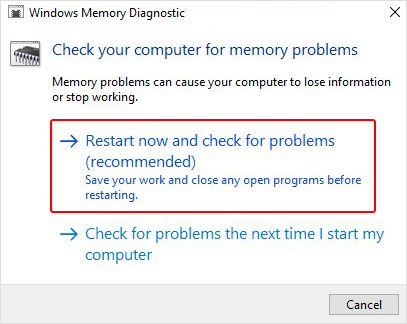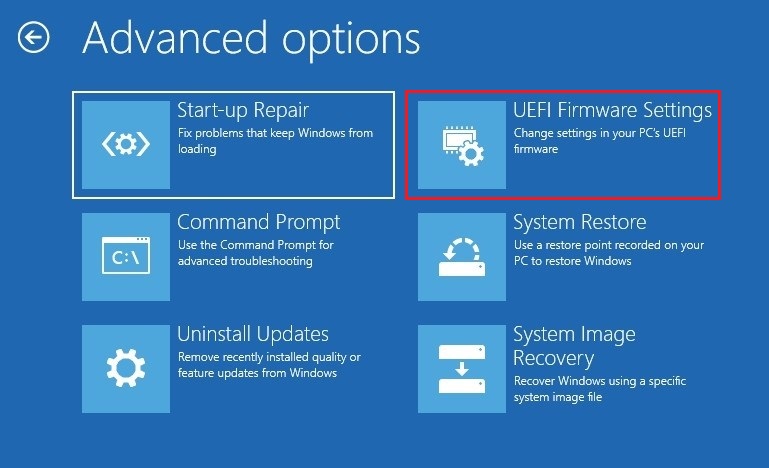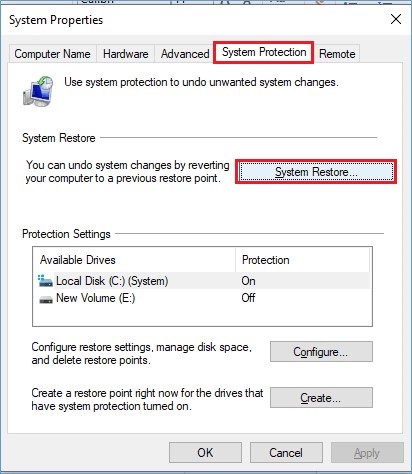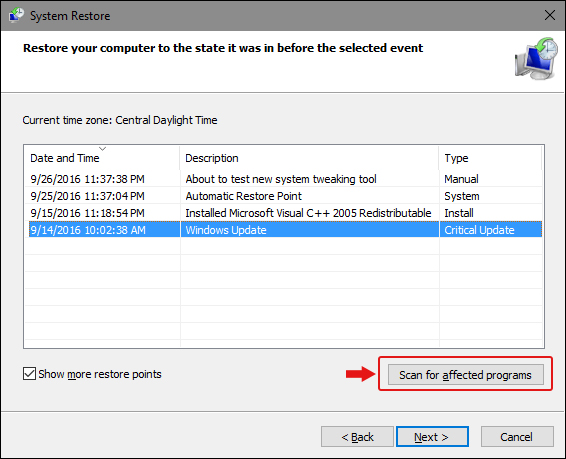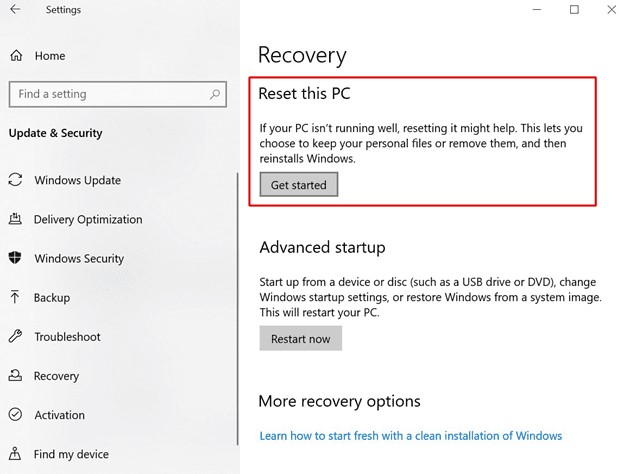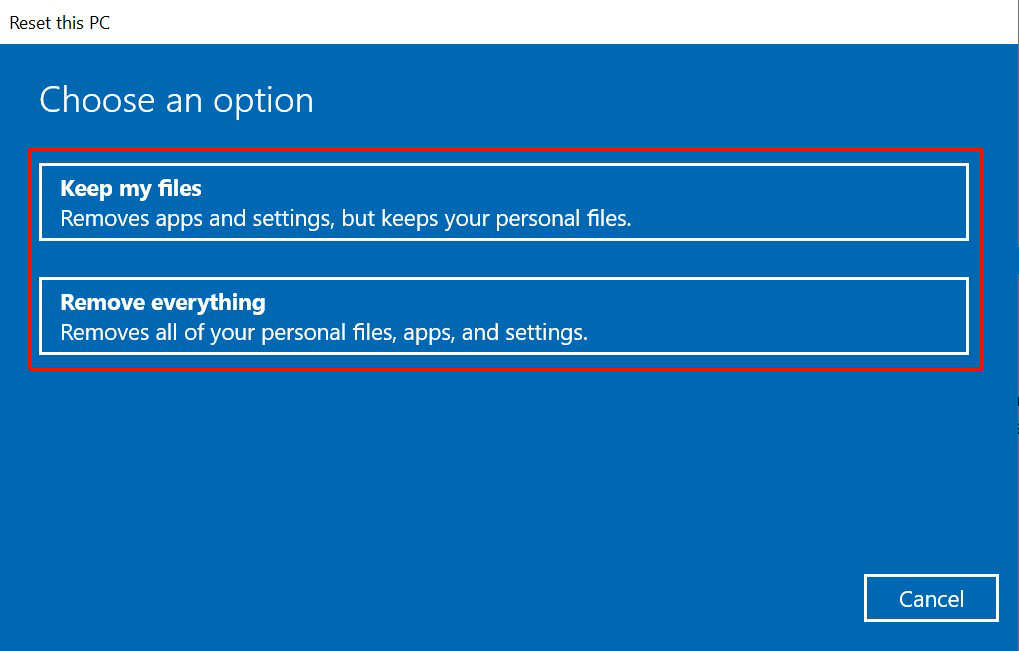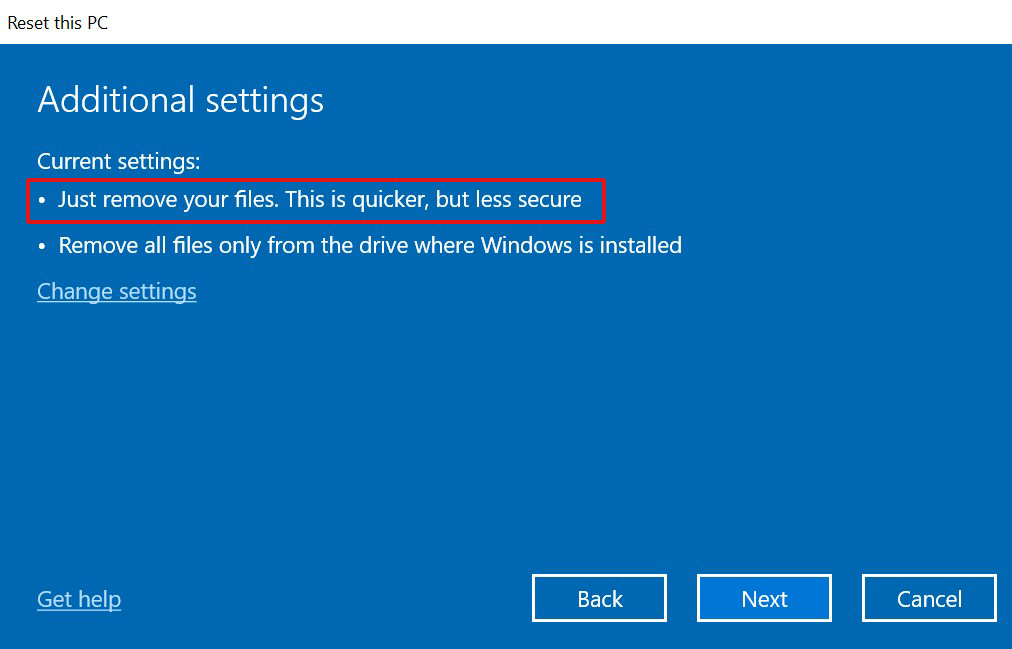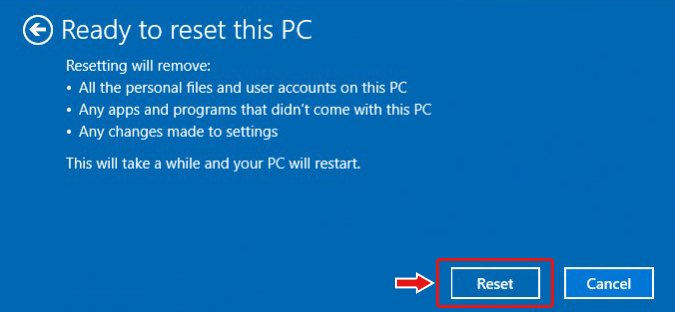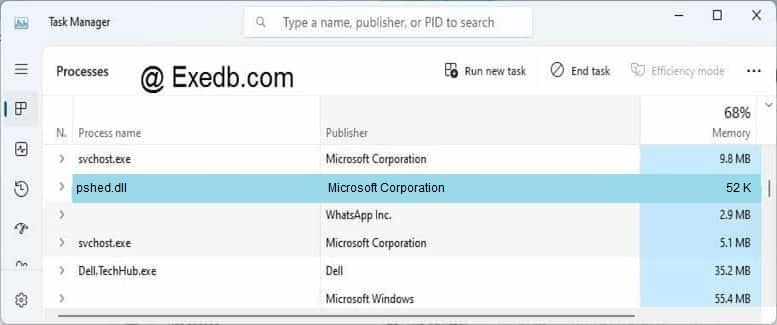Иногда система Windows отображает сообщения об ошибках поврежденных или отсутствующих файлов PSHED.DLL. Подобные ситуации могут возникнуть, например, во время процесса установки программного обеспечения. Каждая программа требует определенных ресурсов, библиотек и исходных данных для правильной работы. Поэтому поврежденный или несуществующий файл PSHED.DLL может повлиять на неудачное выполнение запущенного процесса.
Файл был разработан для использования с программным обеспечением . Здесь вы найдете подробную информацию о файле и инструкции, как действовать в случае ошибок, связанных с PSHED.DLL на вашем устройстве. Вы также можете скачать файл PSHED.DLL, совместимый с устройствами Windows 10, Windows 8.1, Windows 8, Windows 7, Windows 7, Windows Vista, которые (скорее всего) позволят решить проблему.
Совместим с: Windows 10, Windows 8.1, Windows 8, Windows 7, Windows 7, Windows Vista
Популярность пользователя
Исправьте ошибки PSHED.DLL
- 1 Информация о файле PSHED.DLL
- 2 Ошибки, связанные с файлом PSHED.DLL
- 3 Как исправить ошибки, связанные с PSHED.DLL?
- 3.1 Сканирование на наличие вредоносных программ
- 3.2 Обновление системы и драйверов
- 3.3 Инструмент проверки системных файлов
- 3.4 Восстановление системы
- 4 Скачать PSHED.DLL
- 4.1 Список версий файла PSHED.DLL
Информация о файле
| Основная информация | |
|---|---|
| Имя файла | PSHED.DLL |
| Расширение файла | DLL |
| Описание | Platform Specific Hardware Error Driver |
| Программного обеспечения | |
|---|---|
| программа | Microsoft® Windows® Operating System |
| автор | Microsoft Corporation |
| подробности | |
|---|---|
| MIME тип | application/octet-stream |
| Тип файла | Driver |
| система | Windows NT 32-bit |
| Авторские права | © Microsoft Corporation. All rights reserved. |
| Набор символов | Unicode |
| Языковая треска | English (U.S.) |
Наиболее распространенные проблемы с файлом PSHED.DLL
Существует несколько типов ошибок, связанных с файлом PSHED.DLL. Файл PSHED.DLL может находиться в неправильном каталоге файлов на вашем устройстве, может отсутствовать в системе или может быть заражен вредоносным программным обеспечением и, следовательно, работать неправильно. Ниже приведен список наиболее распространенных сообщений об ошибках, связанных с файлом PSHED.DLL. Если вы найдете один из перечисленных ниже (или похожих), рассмотрите следующие предложения.
- PSHED.DLL поврежден
- PSHED.DLL не может быть расположен
- Ошибка выполнения — PSHED.DLL
- Ошибка файла PSHED.DLL
- Файл PSHED.DLL не может быть загружен. Модуль не найден
- невозможно зарегистрировать файл PSHED.DLL
- Файл PSHED.DLL не может быть загружен
- Файл PSHED.DLL не существует
PSHED.DLL
Не удалось запустить приложение, так как отсутствует файл PSHED.DLL. Переустановите приложение, чтобы решить проблему.
OK
Проблемы, связанные с PSHED.DLL, могут решаться различными способами. Некоторые методы предназначены только для опытных пользователей. Если вы не уверены в своих силах, мы советуем обратиться к специалисту. К исправлению ошибок в файле PSHED.DLL следует подходить с особой осторожностью, поскольку любые ошибки могут привести к нестабильной или некорректно работающей системе. Если у вас есть необходимые навыки, пожалуйста, продолжайте.
Как исправить ошибки PSHED.DLL всего за несколько шагов?
Ошибки файла PSHED.DLL могут быть вызваны различными причинами, поэтому полезно попытаться исправить их различными способами.
Шаг 1.. Сканирование компьютера на наличие вредоносных программ.
Файлы Windows обычно подвергаются атаке со стороны вредоносного программного обеспечения, которое не позволяет им работать должным образом. Первым шагом в решении проблем с файлом PSHED.DLL или любыми другими системными файлами Windows должно быть сканирование системы на наличие вредоносных программ с использованием антивирусного инструмента.
Если по какой-либо причине в вашей системе еще не установлено антивирусное программное обеспечение, вы должны сделать это немедленно. Незащищенная система не только является источником ошибок в файлах, но, что более важно, делает вашу систему уязвимой для многих опасностей. Если вы не знаете, какой антивирусный инструмент выбрать, обратитесь к этой статье Википедии — сравнение антивирусного программного обеспечения.
Шаг 2.. Обновите систему и драйверы.
Установка соответствующих исправлений и обновлений Microsoft Windows может решить ваши проблемы, связанные с файлом PSHED.DLL. Используйте специальный инструмент Windows для выполнения обновления.
- Откройте меню «Пуск» в Windows.
- Введите «Центр обновления Windows» в поле поиска.
- Выберите подходящую программу (название может отличаться в зависимости от версии вашей системы)
- Проверьте, обновлена ли ваша система. Если в списке есть непримененные обновления, немедленно установите их.
- После завершения обновления перезагрузите компьютер, чтобы завершить процесс.
Помимо обновления системы рекомендуется установить последние версии драйверов устройств, так как драйверы могут влиять на правильную работу PSHED.DLL или других системных файлов. Для этого перейдите на веб-сайт производителя вашего компьютера или устройства, где вы найдете информацию о последних обновлениях драйверов.
Шаг 3.. Используйте средство проверки системных файлов (SFC).
Проверка системных файлов — это инструмент Microsoft Windows. Как следует из названия, инструмент используется для идентификации и адресации ошибок, связанных с системным файлом, в том числе связанных с файлом PSHED.DLL. После обнаружения ошибки, связанной с файлом %fileextension%, программа пытается автоматически заменить файл PSHED.DLL на исправно работающую версию. Чтобы использовать инструмент:
- Откройте меню «Пуск» в Windows.
- Введите «cmd» в поле поиска
- Найдите результат «Командная строка» — пока не запускайте его:
- Нажмите правую кнопку мыши и выберите «Запуск от имени администратора»
- Введите «sfc / scannow» в командной строке, чтобы запустить программу, и следуйте инструкциям.
Шаг 4. Восстановление системы Windows.
Другой подход заключается в восстановлении системы до предыдущего состояния до того, как произошла ошибка файла PSHED.DLL. Чтобы восстановить вашу систему, следуйте инструкциям ниже
- Откройте меню «Пуск» в Windows.
- Введите «Восстановление системы» в поле поиска.
- Запустите средство восстановления системы — его имя может отличаться в зависимости от версии системы.
- Приложение проведет вас через весь процесс — внимательно прочитайте сообщения
- После завершения процесса перезагрузите компьютер.
Если все вышеупомянутые методы завершились неудачно и проблема с файлом PSHED.DLL не была решена, перейдите к следующему шагу. Помните, что следующие шаги предназначены только для опытных пользователей
Загрузите и замените файл PSHED.DLL
Последнее решение — вручную загрузить и заменить файл PSHED.DLL в соответствующей папке на диске. Выберите версию файла, совместимую с вашей операционной системой, и нажмите кнопку «Скачать». Затем перейдите в папку «Загруженные» вашего веб-браузера и скопируйте загруженный файл PSHED.DLL.
Перейдите в папку, в которой должен находиться файл, и вставьте загруженный файл. Ниже приведен список путей к каталогу файлов PSHED.DLL.
- Windows 10: C:WindowsSystem32
- Windows 8.1: C:WindowsSystem32
- Windows 8: 1: C:WindowsSystem32
- Windows 7: C:WindowsSystem32
- Windows 7: C:WindowsSystem32
- Windows Vista: —
Если действия не помогли решить проблему с файлом PSHED.DLL, обратитесь к профессионалу. Существует вероятность того, что ошибка (и) может быть связана с устройством и, следовательно, должна быть устранена на аппаратном уровне. Может потребоваться новая установка операционной системы — неправильный процесс установки системы может привести к потере данных.
Список версий файлов

Имя файла
PSHED.DLL
система
Windows 10
Размер файла
59296 bytes
Дата
2017-03-18
| Подробности файла | ||
|---|---|---|
| MD5 | 6f8d9207d948027a6cc5ac2e23dccd16 | |
| SHA1 | 0b98f6a4b66e099bed4ff274218e1b71335b7dd3 | |
| SHA256 | 0e45e48e1b5ce2bdb5d11d9d94f9f4dd5b6288bcfd8e330703ea733657bb3cda | |
| CRC32 | 39042c4c | |
| Пример расположения файла | C:WindowsSystem32 |

Имя файла
PSHED.DLL
система
Windows 8.1
Размер файла
59744 bytes
Дата
2013-08-22
| Подробности файла | ||
|---|---|---|
| MD5 | 2a2580b40a0eb8622985a2d2a8529409 | |
| SHA1 | 38c805713a10eac16abbe678e5a7026e24b37858 | |
| SHA256 | 9bf17d98ca5feb78d86e94275f62f622071936b9515d9e1b22821c24c8815c81 | |
| CRC32 | e7d03d94 | |
| Пример расположения файла | C:WindowsSystem32 |

Имя файла
PSHED.DLL
система
Windows 8
Размер файла
60144 bytes
Дата
2012-07-26
| Подробности файла | ||
|---|---|---|
| MD5 | e2ce21b635ef67d4deddf037636be921 | |
| SHA1 | 8a2e016b9ee7789218c4c260dd1230203b3d7696 | |
| SHA256 | 75c01e03e9f356f8684c41552ce54ae7f6805f6d70785430b7278f4eae552c4d | |
| CRC32 | b72548eb | |
| Пример расположения файла | 1: C:WindowsSystem32 |

Имя файла
PSHED.DLL
система
Windows 7
Размер файла
57424 bytes
Дата
2009-07-14
| Подробности файла | ||
|---|---|---|
| MD5 | a3db3c17ee6cae65d53602b4e80bccbc | |
| SHA1 | 74ec852385a3bc2d6a065dddd28d1c40b2629375 | |
| SHA256 | d802a7c6161f937dc42a6e45fe1bb2c8272819f92c294c180ebcdf8ff72cbfdc | |
| CRC32 | 60fd8f8d | |
| Пример расположения файла | C:WindowsSystem32 |

Имя файла
PSHED.DLL
система
Windows 7
Размер файла
52816 bytes
Дата
-0001-11-30
| Подробности файла | ||
|---|---|---|
| MD5 | d93a937a2a9d2cbc06b3a615a197011f | |
| SHA1 | fcbf6d0d28bea874c1f6e67a99e9b9e0bf4e44fd | |
| SHA256 | e55028f641512ec22cec4674f7e380fe71059a21e51ecb345ddb769a276f30d1 | |
| CRC32 | 410059ee | |
| Пример расположения файла | C:WindowsSystem32 |

Имя файла
PSHED.DLL
система
Windows Vista
Размер файла
55272 bytes
Дата
2009-04-11
| Подробности файла | ||
|---|---|---|
| MD5 | 9e693c6146932b5369dffa584e805ef6 | |
| SHA1 | 501d6811a1d8b4c435caaa3158dd75f7a3c688f3 | |
| SHA256 | 4b3647aca543884168c8f3a32de95e5ff6f05c866a89f51d413c341334e237e4 | |
| CRC32 | be772ba0 | |
| Пример расположения файла | — |
Repairing broken or corrupt system files can fix this issue in no time
by Matthew Adams
Matthew is a freelancer who has produced a variety of articles on various topics related to technology. His main focus is the Windows OS and all the things… read more
Updated on March 23, 2023
Reviewed by
Vlad Turiceanu
Passionate about technology, Windows, and everything that has a power button, he spent most of his time developing new skills and learning more about the tech world. Coming… read more
- Pshed.dll Windows 10 BSOD errors can arise due to failing hardware or corrupted system files.
- You can fix this by scanning your system and repairing the file corruption.
- Updating your drivers manually or automatically with specialized software could solve the problem.
XINSTALL BY CLICKING THE DOWNLOAD FILE
This tool will replace the damaged or corrupted DLLs with their functional equivalents using its dedicated repository where it has the official versions of the DLL files.
- Download and Install Fortect on your PC
- Launch the tool and Start scanning to find DLL files that could be causing PC problems
- Right-click on Start Repair to replace broken DLLs with working versions
- Fortect has been downloaded by 0 readers this month.
Pshed.dll is a Dynamic Link Library system file that’s sometimes referenced in different Blue Screen of Death issues.
The dump files for those BSOD error messages specify that they’re caused by a Pshed.dll driver. There are various ways you can fix Pshed.dll BSOD errors and today we’ll show you the best methods to use.
What causes Pshed.dll BSOD?
There are a few reasons for the pshed.dll error on Windows 10. Below are the common ones:
- Outdated drivers: The Pshed.dll WHEA Uncorrectable Error is one of the frustrating BSoD issues that can be caused by outdated drivers. Your only way around this is to update your drivers.
- Corrupt system files: Faulty system files are one of the biggest causes of this Blue Screen of Death error. You need to repair and restore these files to get past this Pshed.dll NTOSKRNL.exe BSoD.
- Faulty memory: When your PC memory is faulty, it can also lead to this issue. You can confirm this by running the Memory Diagnostic tool.
How can I fix Pshed.dll blue screen errors?
Before proceeding to the fixes in this guide:
- Try to update your BIOS and see if it solves this issue.
If it does not work, you can explore the solutions below.
1. Repair system files
- Press the Windows key + S, type cmd, and select Run as administrator under Command Prompt.
- Type the command below and press Enter:
sfc /scannow - Wait for the command to finish, copy and paste the command below, and hit Enter:
DISM.exe /Online /Cleanup-image /Restorehealth
SFC and DISM scans are the two repair tools for fixing system files. They should be able to fix the Pshed.dll issue. Here’s what to do if sfc /scannow isn’t working.
Also, some third-party Windows 10 repair utilities can fix a wide range of BSOD errors. Those system repair packages include scanning options for hardware, security, and stability issues.
After scanning your system, rest assured that you can fix these problems with just a click of a button.
2. Update system drivers
- Press the Windows key + X and choose Device Manager.
- Click the arrow next to the option to update driver for, right-click the driver there, and choose Update driver.
- Now select Search automatically for drivers and follow the instructions on the screen.
- Repeat these steps for all outdated drivers.
Pshed.dll BSOD errors, and others, can be caused by outdated drivers, so be sure to update them. Updating drivers manually is a tedious task, and this is why it’s better to use a dedicated tool.
⇒ Get DriverFix
3. Stop overclocking
- Press the Windows key + I to open the Settings app and click Update & Security.
- Select Recovery in the left pane and click the Restart now button under Advanced startup.
- When your PC restarts, choose Troubleshoot > Advanced options.
- Then, select UEFI Firmware Settings and the Restart option.
- When your PC restarts within UEFI or BIOS settings, you’ll need to locate and open the Overclocking section.
- Disable all overclocking settings from there.
NOTE
You should also uninstall any third-party overclocking software installed.
4. Run Windows Memory Diagnostic check
- Press the Windows key + R, type mdsched.exe, and click OK.
- Select Restart now and check for problems (recommended).
- Wait for the diagnosis to complete and follow any given recommendation.
If Windows Memory Diagnostic detected issues, you might need to replace your PC’s RAM module to resolve the Pshed.dll issue.
- Bindflt.sys Blue Screen: How to Fix It in 5 Steps
- Fix: A Service Installation Section in this INF is Invalid
- Hidusb.sys BSoD: What is it & How to Fix it
5. Perform system restore
- Press the Windows key + R, type rstrui.exe, and hit Enter.
- Tick the Choose a different restore point button and click Next.
- Choose a later restore point before you started getting the Pshed.dll error and click Next.
- Finally, click the Finish button to confirm the action.
In a case where you can’t get past the Pshed.dll issue, you might need to restore your PC to a later time to make it work.
The above resolutions could feasibly fix the majority of Pshed.dll Windows 10 BSOD errors for most users. Nevertheless, those who still need more potential fixes should check out the best BSOD repair software.
Did you find a different solution for this problem? Do not hesitate to let us know in the comments section below.
Summary:
Many users have reported encountering the PSHED.Dll error on their Windows 10 system. This blue screen error can occur for multiple reasons, such as faulty hardware, corrupted system files, etc. In this blog, learn what this error means, its causes, and methods to fix it.

Contents
- What Causes PSHED.Dll Error?
- How to fix the PSHED.Dll BSOD Error on Windows 10?
PSHED.Dll (Dynamic Link Library) is one of the most common BSOD (Blue Screen of Death) errors. It can occur right after turning on your system or while you’re in the middle of an important task. A few users also encountered this problem while watching YouTube videos on Chrome.
-Microsoft user
The PSHED.Dll Windows 10 error may appear with different stop codes and error messages, such as:
- PSHED.Dll Ntoskrnl.exe BSOD
- Hal.dll ntoskrnl.exe PSHED.Dll BSOD
- 0x124 PSHED.Dll
- PSHED.Dll WHEA Uncorrectable Error,
- PSHED.Dll has been deleted or is corrupted
What Causes PSHED.Dll Error?
This blue screen error may occur for multiple reasons, including an incompatible or faulty device driver, missing or corrupted system files, outdated BIOS, defective hard drive, memory issues, etc. Read on to find some effective DIY troubleshooting methods to fix the PSHED.Dll BSOD Windows 10 error.
As some Windows users reported that they tried factory resetting their PC, but the BSOD error kept coming up, we’d suggest you boot your system in safe mode to prevent interruptions while fixing the error.
To boot into Safe Mode, follow the given steps:
- Reboot your Windows 10 system. The moment you start to see the Windows logo on screen, turn off your system again.
- Repeat this step thrice. After that, you should reach the Automatic Repair environment.
- There, click ‘Advanced options’ to proceed.
- Next, click Troubleshoot on the ‘Choose an option’ screen.
- On the next screen, click ‘Advanced options’ on Troubleshoot screen.
- Afterward, you need to select Startup Settings from the available options.
- On the next prompt, click Restart. The system will reboot and give you multiple options. Press F4 to enable Safe Boot.
How to fix the PSHED.Dll BSOD Error on Windows 10?
Now that you’ve booted successfully into safe mode, you can start performing the troubleshooting methods given below.
- Update device driver
- Run an SFC Scan
- Run CHKDSK Command
- Run Windows Memory Diagnostic Tool
- Update BIOS
- Perform System Restore
- Reset Windows 10 PC
Method 1: Update Device Drivers
- Open Device Manager and then go to the Device category for which you want to update the driver.
- Expand the device category, right-click on the driver, and click Update driver.
- Click Search automatically for drivers, and Windows 10 will start looking for the latest driver software available.
- Suppose you don’t find any latest driver. In that case, you can uninstall the buggy one and reinstall the compatible one either by visiting the device manufacturer’s website or by installing Windows Update. To do so, follow System Settings > Update & Security > Windows Update > Check for updates.
- After installing the Windows update, the latest and compatible device drivers will be downloaded automatically.
Method 2: Run an SFC Scan
- Open Command Prompt and click ‘Run as administrator.’
- In the command prompt window, type DISM.exe /Online /Cleanup-image /Restorehealthand hit Enter.
- Wait for a while till the system shows files that need to be fixed.
- Next, type SFC/Scannow and press Enter.
- Let the process end, and once done, close the window and reboot your system to check if the error is gone.
Method 3: Run CHKDSK Command
When you run the CHKDSK command, it scans and marks the bad sectors on the hard drive. But it prevents Windows from reading and store data from these bad sectors, which may cause you to lose your essential data. So, before performing this method, take a backup of your system (if possible).
- Run Command Prompt as an administrator and type CHKDSK /f/r/d: and press Enter.
- It will take some time. Once done, close the window and restart your system to check if the PSHED.DLL is gone now.
If you don’t have any backup, you can restore data using powerful data recovery software, such as Stellar Data Recovery Professional. It is a robust and efficient DIY data retrieval software, which can retrieve all types of data, including files, folders, audio files, videos, photos, and more. It supports recovery from Windows systems and storage media drives, such as HDDs, SSDs, USB drives, etc.
Method 4: Run Windows Memory Diagnostic tool
- Type memory diagnostic in Windows Search Box to open Windows Memory Diagnostic tool.
- In the next window, select Restart now and check for problems (recommended).
- The system will restart. The moment system will reboot, and a test will start checking up any problems with your RAM.
- Once the test is done, you’ll see the test results. If there is any further instruction given on the screen, follow them and fix the problem.
Method 5: Update from BIOS
- Restart your Windows 10 and enter the Automatic Repair environment using the steps to boot into safe mode.
- Once you reach the Automatic Repair environment, follow Advanced options > Troubleshoot.
- Next, click Advanced options > UEFI Firmware Settings
- Next, click Restart. The system will reboot and should now boot to BIOS.
- Now, note down the make and model of your motherboard. (You can find it in the motherboard’ user manual.)
- Open the System Information app to identify the BIOS current version. For this, type System Information in the search box, and after that, click System Summary. You’ll be able to see the BIOS version on display.
- Next, visit the motherboard’s manufacturer’s site, search for your system model, and then look for BIOS updates from the list of available downloads.
- Now, run the BIOS update. Once done, reboot your PC; the error should be solved.
Method 6: Perform System Restore
System Restore brings the system to default configuration or chosen restore point, due to which you may lose some of your programs, apps, system files, etc. So, either take a backup of your system data or use robust data recovery software.
After recovering the data, you can start performing system restore. Follow the given steps:
- Go to the Windows Search box and type Create a restore point.
- Afterward, navigate to the System Protection tab, and click System Restore.
- Click Next > Next to proceed. Now, select a restore point from the available ones and click Scan for affected programs.
- The process will start looking for the programs and applications, etc., that will be affected.
- After this, click Finish and close the window.
- Now, reboot your Windows 10 and check if the PSHED.Dll BSOD error is fixed.
Method 7: Reset your Windows 10
If none of the above-discussed methods work for you, you’re left with nothing else but resetting your PC. Here, we’re not talking about factory reset, but resetting the system by removing all those programs, apps, files, or anything that may cause problems with your system.
- Open System Settings and follow Update & Security > Recovery > Reset this PC > Get started.
- Next, you’ll get to see two options – Keep my files and Remove everything.
- If you want to save your data, choose ‘Keep my files’ and proceed with the instructions given on screen.
- If the data is unimportant or you’ve already backed up your data, choose ‘Remove everything’. (It is recommended for the process to work).
- Afterward, click ‘Just remove your files’ and click Next.
- Next, a warning message will appear on the screen. Click Next > Reset.
- If prompted with a confirming message, click Continue to initiate the process.
- After this, your Windows 10 will be as fresh as new, and hopefully, the error will be gone forever.
PSHED.DLL error on Windows 10 can occur due to multiple reasons, as discussed in this blog. However, the methods shared above may feasibly help you troubleshoot this blue screen error. Remember, some of these methods, such as running the CHKDSK command, performing a system restore, or resetting your system, may cause data loss. Hence, take back up of your system data before attempting them (if possible). Else, restore your essential data using robust data recovery software, such as Stellar Data Recovery Professional. It supports data recovery from unbootable, crashed, or even BSOD-affected Windows systems.
About The Author
Mansi Verma
Mansi Verma is a Senior Technology Writer at Stellar®. She is a Tech enthusiast, holding over 8 years of experience in Data Recovery, IoT, Artificial Intelligence, and the Robotics technology domain. She loves researching and providing DIY solutions to solve Windows technical issues. In her spare time, she likes reading novels, and poetry. She also enjoys Travelling, Rafting, Trekking, etc.

Добрый день!
Помогите, пожалуйста, разобраться с проблемой. Самостоятельно решить не получается(
В последнее время стали беспокоить внезапные выключения компьютера с синим экраном. Проблеме уже около полугода, но по ощущениям подобные вылеты участились и хотелось бы всё-таки понять, что следует обновить на своём компьютере.
Чаще всего ошибка возникает во время нагрузки системы (при работе Фотошопа, например, когда открыла инструмент пластики или во время игры в онлайн-игру), однако пару раз случались вылеты во время обычной офисной работы (было открыто видео на одной из вкладок браузера, но обычно я спокойно смотрю видео без синих экранов, поэтому даже не знаю, стало ли это триггером в тот раз).
Винда выдаёт ошибку как WHEA_UNCORRECTABLE_ERROR (или 0x00000124).
По советам из интернета я пробовала обновлять драйвера, устанавливать обновления винды, запускала из командной строки sfc /scannow, chckdsk (на какое-то время показалось, что помогло), проверяла на вирусы, сбрасывала настройки БИОСа, разгоном не занималась, память проверяла встроенным средством проверки Windows (через memtest не пробовала)
запускала также стресс-тест в Аиде, в ОССТ запускала на 15 минут тестирование CPU и Power (Комбинированный тест для максимальной нагрузки процессора и видеокарты, дополнительно тестирует блок питания и цепи питания мат.платы). Ошибок и синих экранов не было. Скрины с показателями из ОССТ на всякий случай тоже прилагаю — https://disk.yandex.ru/d/TETmn9qynA3xbQ
Единственное, что смущает — это показатели блока питания, который мне уже здесь советовали заменить в другой теме. От покупки останавливал тот факт, что при замерах мультиметром показания нормальные:
+11.94v — +12.00v
+5.15v — +5.17v
+3.19v — 3.24v
(эти замеры были сделаны около месяца назад, при необходимости могу повторить еще раз)
В программе BlueScreenView, если включить режим синего экрана, пишет следующее:
Technical Information:
*** STOP: 0x00000124 (0x0000000000000000, 0xffffb30539a20028, 0x00000000b47b2000,
0x00000000ac000145)
*** PSHED.dll — Address 0xfffff806424a15b0 base at 0xfffff806424a0000 DateStamp
0x4c55dc99
я подозреваю, что виноват кто-то из них: процессор, материнка, блок питания.
Однако хотелось бы обойтись наименьшими заменами и понять точнее, в чем причина. Может быть, покупка нового БП решит все проблемы. Буду очень признательна, если вы поможете мне разобраться или хотя бы понять, что следует заменить в первую очередь.
Архив с двумя последними дампами — https://disk.yandex.ru/d/hhKVt5BgSb8dSQ
Отчет из Аиды — https://disk.yandex.ru/d/XDrkNYcyAZi9tg
ОС: Windows 10 Pro x64
ОЗУ: 16ГБ
Материнка: Asus Sabertooth 990 FX
Процессор: TripleCore AMD Athlon II X3 450, 3200 MHz (16 x 200)
Видеокарта: Nvidia GeForce GTX 1050
Блок питания: DNS FinePOWER DNP-500 450w
Содержание
- 3 простых шага по исправлению ошибок PSHED.DLL
- 1- Очистите мусорные файлы, чтобы исправить pshed.dll, которое перестало работать из-за ошибки.
- 2- Очистите реестр, чтобы исправить pshed.dll, которое перестало работать из-за ошибки.
- 3- Настройка Windows для исправления критических ошибок pshed.dll:
- Как вы поступите с файлом pshed.dll?
- Некоторые сообщения об ошибках, которые вы можете получить в связи с pshed.dll файлом
- PSHED.DLL
- процессов:
- Windows 10 pro BSOD. hal.dll, ntoskrnl.exe, PSHED.dll
- Replies (4)
- Pshed dll синий экран windows 10 x64
3 простых шага по исправлению ошибок PSHED.DLL
Файл pshed.dll из Microsoft Corporation является частью Microsoft Windows Operating System. pshed.dll, расположенный в C: Windows winsxs x86_microsoft-windows-pshed_31bf3856ad364e35_6 .1 .7600 .16385_none_5bc939738e682485 с размером файла 52816.00 байт, версия файла 6.1.7600.16385, подпись not found.
В вашей системе запущено много процессов, которые потребляют ресурсы процессора и памяти. Некоторые из этих процессов, кажется, являются вредоносными файлами, атакующими ваш компьютер.
Чтобы исправить критические ошибки pshed.dll,скачайте программу Asmwsoft PC Optimizer и установите ее на своем компьютере
1- Очистите мусорные файлы, чтобы исправить pshed.dll, которое перестало работать из-за ошибки.
- Запустите приложение Asmwsoft Pc Optimizer.
- Потом из главного окна выберите пункт «Clean Junk Files».
- Когда появится новое окно, нажмите на кнопку «start» и дождитесь окончания поиска.
- потом нажмите на кнопку «Select All».
- нажмите на кнопку «start cleaning».
2- Очистите реестр, чтобы исправить pshed.dll, которое перестало работать из-за ошибки.
3- Настройка Windows для исправления критических ошибок pshed.dll:
- Нажмите правой кнопкой мыши на «Мой компьютер» на рабочем столе и выберите пункт «Свойства».
- В меню слева выберите » Advanced system settings».
- В разделе «Быстродействие» нажмите на кнопку «Параметры».
- Нажмите на вкладку «data Execution prevention».
- Выберите опцию » Turn on DEP for all programs and services . » .
- Нажмите на кнопку «add» и выберите файл pshed.dll, а затем нажмите на кнопку «open».
- Нажмите на кнопку «ok» и перезагрузите свой компьютер.
Всего голосов ( 64 ), 31 говорят, что не будут удалять, а 33 говорят, что удалят его с компьютера.
Как вы поступите с файлом pshed.dll?
Некоторые сообщения об ошибках, которые вы можете получить в связи с pshed.dll файлом
(pshed.dll) столкнулся с проблемой и должен быть закрыт. Просим прощения за неудобство.
(pshed.dll) перестал работать.
pshed.dll. Эта программа не отвечает.
(pshed.dll) — Ошибка приложения: the instruction at 0xXXXXXX referenced memory error, the memory could not be read. Нажмитие OK, чтобы завершить программу.
(pshed.dll) не является ошибкой действительного windows-приложения.
(pshed.dll) отсутствует или не обнаружен.
PSHED.DLL
Проверьте процессы, запущенные на вашем ПК, используя базу данных онлайн-безопасности. Можно использовать любой тип сканирования для проверки вашего ПК на вирусы, трояны, шпионские и другие вредоносные программы.
процессов:
Cookies help us deliver our services. By using our services, you agree to our use of cookies.
Windows 10 pro BSOD. hal.dll, ntoskrnl.exe, PSHED.dll
Hi all, just experienced my fifth BSOD this week after being forced to upgrade to 10 after my SSD died last friday. Used BlueScreenView to see what’s causing it, 3 drivers responsible; hal.dll, ntoskrnl.exe and PSHED.dll. dump file linked below
the problem seems to occur less often now I’ve turned MSI fastboot off, and only seems to occur while i watch YouTube using chrome, which made me think it could be a memory problem (chrome eats my memory for breakfast), but even with 4 tabs open with two showing YouTube content i’m only using 5/16GB.
I’ve seen some of the other posts about hal.dll BSOD problems but the fixes there don’t seem to do anything and the idea of doing another clean install of 10 isn’t the most attractive proposition as it took about 2 full days to get all the drivers and utilities i had lost back the first time.
any ideas of what i can try? worst comes to worst is there a way to make a backup of all my drivers as well as programs while leaving OS stuff to be formatted?
OS: win 10 pro 64-bit
CPU: Intel Core i5 4690K @ 3.50GHz
RAM: 16GB HyperX savage 1866MHz DDR3
Mobo: MSI Z97 GAMING 5
GPU: EVGA GTX 980Ti Superclocked
It could suggest you need to update your chipset drivers and BIOS.
I recommend you update the most critical ones: BIOS, Chipset, Display Driver, Network
uninstall your display driver then restart
Boot to the Windows 10 desktop
Press Windows key + X
Click Device Manager
Expand Display adapters
Right click the current display adapter
Click Uninstall
Exit Device Manager
Restart
1 person found this reply helpful
Was this reply helpful?
Sorry this didn’t help.
Great! Thanks for your feedback.
How satisfied are you with this reply?
Thanks for your feedback, it helps us improve the site.
How satisfied are you with this reply?
Thanks for your feedback.
We are volunteers willing to help you try to resolve this issue.
Information on Backup and System Image are at the end.
Please realize this BSOD Bug_check can be very difficult to resolve and may well involve hardware. I did perform a complete and comprehensive analysis of the minidump you posted.
Could be heat related — try using a small fan to blow into the air intakes to see if that helps. Does it just act like it loses power or does it shutdown in a normal manner? Heat related does not always mean too much heat as it is very possible that something is too sensitive to even normal levels of heat.
Remove ALL power and reseat all cards, memory, and cables (both ends when possible) — actually remove and replace — do not just snug. Remove the dust bunnies and clean the vents. Check that the fans work (before and after opening the case). If a laptop about all you can do is reseat the memory and clean the vents (still can try adding a small fan as a test).
This sounds like hardware so if the above does not help then you probably need the help of a real computer shop (one that does its own in-shop service) or the System Maker’s Support.
Troubleshoot blue screen errors Rob Brown — past Microsoft MVP — Windows Insider MVP 2016 — 2021
Microsoft MVP Windows and Devices for IT 2009 — 2020
Pshed dll синий экран windows 10 x64
Сообщения: 51907
Благодарности: 14931
| Конфигурация компьютера | |
| Материнская плата: ASUS P8Z77-V LE PLUS | |
| HDD: Samsung SSD 850 PRO 256 Гб, WD Green WD20EZRX 2 Тб | |
| Звук: Realtek ALC889 HD Audio | |
| CD/DVD: ASUS DRW-24B5ST | |
| ОС: Windows 8.1 Pro x64 | |
| Прочее: корпус: Fractal Design Define R4 |

Чаще всего первый параметр равен 0 (machine check exception), возможные причины:
- неисправность процессора;
- чрезмерный разгон;
- недостаточное напряжение на процессоре (обычно в случае разгона);
- несовместимость процессора/памяти/материнской платы (можно обновить BIOS, заменить память, проверить списки совместимости на сайте производителя материнской платы);
- неисправность материнской платы (например, опухшие конденсаторы в схеме питания процессора);
- недостаточная мощность или неисправность блока питания.
Это сообщение посчитали полезным следующие участники:
| Конфигурация компьютера | |
| Материнская плата: ASUS P7H55/USB3 | |
| HDD: 1) Maxtor 6Y080MO ATA Device 75.8 GB, 2) ST-3160813AS ATA Device 148 GB | |
| Звук: AMD High Definition Audio Device | |
| CD/DVD: LG HL-DT-ST BDDVDRW ATA Device | |
| ОС: Windows 10 Pro x32 |
ruslan. и все остальные участники, приветствую!
Спасибо за подсказки и идеи, начала уже было читать, каким образом правильно откатить разгон процессора (разгоняла не я, и конкретный механизм сейчас уже нет возможности выяснить). Потом навалились разные дела и командировки, и домашний комп довелось включить только недели через три. Тут установились какие-то дефолтные апдэйты винды, и — «Ура, пацаны, я снова хожу. «(с) 
Таким образом, мой вывод: просто Win10 — ещё очень сырая штука (как собсно меня и предупреждали).
На всякий случай, перечислю здесь последние автозагруженные апдэйты (может, пригодится кому-то с такой же проблемой):
Cumulative Update for Windows 10 Version 1607 (KB4015438)
Update for Windows 10 Version 1607 (KB3150513)
Cumulative Update for Windows 10 Version 1607 (KB4013429)
Update for Windows 10 Version 1607 (KB4013418)
Если же вы забыли свой пароль на форуме, то воспользуйтесь данной ссылкой для восстановления пароля.
| Конфигурация компьютера | |
| Материнская плата: Asus P5P43TD Pro (3 PCI, 2 PCI-E x1, 1 PCI-E x16, 4 DDR3 DIMM, Audio, Gigabit LAN, IEEE-1394) | |
| HDD: Western Digital Caviar Green, 1тб и 1.5тб, SATA-II и SATA-III | |
| Звук: Realtek ALC887 @ Intel 82801JB ICH10 — High Definition Audio Controller | |
| CD/DVD: Optiarc DVD RW AD-7240S ATA Device | |
| ОС: Microsoft Windows 7 Professional 64-bit | |
 |
041917-56191-01.rar |
| (34.2 Kb, 5 просмотров) |
Сообщения: 10692
Благодарности: 2884
| Конфигурация компьютера | |
| Материнская плата: MSI H61M-P21 (MS-7680) (B3.0) | |
| HDD: WDC Caviar Green WD10EARS-22Y5B1 ATA Device 1Т (1000 Gb), WDC Caviar Blue WD10EZEX-08M2NA0 ATA Device 1Т (1000 Gb) | |
| Звук: VIA VT1708S VIA High Definition Audio | |
| CD/DVD: ATAPI iHAS122 ATA Device | |
| ОС: Microsoft Windows 7 Home Basic x86, Microsoft Windows 10 Home x64 . | |
| Прочее: Multi Flash Reader USB Device, Logitech HD Webcam C310 |
Удалите Daemon Tools.
——-
Будь джентльменом, если есть удача. А нет удачи, джентльменов нет . Нажми .
» width=»100%» style=»BORDER-RIGHT: #719bd9 1px solid; BORDER-LEFT: #719bd9 1px solid; BORDER-BOTTOM: #719bd9 1px solid» cellpadding=»6″ cellspacing=»0″ border=»0″>
Сообщения: 10692
Благодарности: 2884
| Конфигурация компьютера | |
| Материнская плата: MSI H61M-P21 (MS-7680) (B3.0) | |
| HDD: WDC Caviar Green WD10EARS-22Y5B1 ATA Device 1Т (1000 Gb), WDC Caviar Blue WD10EZEX-08M2NA0 ATA Device 1Т (1000 Gb) | |
| Звук: VIA VT1708S VIA High Definition Audio | |
| CD/DVD: ATAPI iHAS122 ATA Device | |
| ОС: Microsoft Windows 7 Home Basic x86, Microsoft Windows 10 Home x64 . | |
| Прочее: Multi Flash Reader USB Device, Logitech HD Webcam C310 |
Что Вы должны были сделать, перед обращением сюда ?
Убрать разгон процессора и проверять проблему. Убирайте разгон.
Дополнительно, если проблема все же останется:
Обновить или установить более старую версию драйвера видеокарты.
Удалить ПО CPU-Z , Avast .
Проверить наличие проблемы, поочередно работая на одной планке памяти.
Выкладывать нужно несколько дампов.
——-
Будь джентльменом, если есть удача. А нет удачи, джентльменов нет . Нажми .
Это сообщение посчитали полезным следующие участники:
Сообщения: 863
Благодарности: 209
ruslan.
Оценил твой анализ. По данному дампу при просмотре Arg2 мы видим тег CPER, смотрим, кто определяется под этим тегом? Такой тег имеет ядро ntkrnlmp.exe и библиотека PSHED.dll
nt
fffff800`9d35062a 43 50 45 52 41 0f b7 40-40 66 89 41 32 8d 42 d8 CPERA..@@f.A2.B.
fffff800`9d447043 43 50 45 52 75 69 0f b7-49 0a 8d 04 c9 8d 04 c5 CPERui..I.
fffff800`9d447a9e 43 50 45 52 66 89 43 04-33 c0 66 89 43 0a 48 b8 CPERf.C.3.f.C.H.
fffff800`9d9d8962 43 50 45 52 4e 4f 44 45-3d 00 cc cc cc cc 20 4d CPERNODE=. M
5: kd> lmvm nt
start end module name
fffff800`9d21c000 fffff800`9da3c000 nt (pdb symbols) c:symbolsntkrnlmp.pdb3DFC5F7228304C26859E55E4817003851ntkrnlmp.pdb
Loaded symbol image file: ntkrnlmp.exe
Mapped memory image file: c:symbolsntoskrnl.exe585A2651820000ntoskrnl.exe
Image path: ntkrnlmp.exe
Image name: ntkrnlmp.exe
Timestamp: Wed Dec 21 09:50:57 2016 (585A2651)
CheckSum: 00783409
ImageSize: 00820000
File version: 10.0.14393.693
Product version: 10.0.14393.693
File flags: 0 (Mask 3F)
File OS: 40004 NT Win32
File type: 1.0 App
File date: 00000000.00000000
Translations: 0409.04b0
[b]CompanyName: Microsoft Corporation[
ProductName: Microsoft® Windows® Operating System
InternalName: ntkrnlmp.exe
OriginalFilename: ntkrnlmp.exe
ProductVersion: 10.0.14393.693
FileVersion: 10.0.14393.693 (rs1_release.161220-1747)
FileDescription: NT Kernel & System
LegalCopyright: © Microsoft Corporation. All rights reserved.
PSHED
fffff804`929d2863 43 50 45 52 75 7f 3b 0d-a9 4e 00 00 77 77 e8 7a CPERu.;..N..ww.z
fffff804`929d3c68 43 50 45 52 75 1c 48 8b-41 6c 48 ba ff ff ff ff CPERu.H.AlH.
5: kd> lmvm PSHED
start end module name
fffff804`929d0000 fffff804`929e7000 PSHED (pdb symbols) c:symbolspshed.pdb9DD415F6C50748C68A8D9C176A3FBC6D1pshed.pdb
Loaded symbol image file: PSHED.dll
Mapped memory image file: c:symbolsPSHED.dll578997A417000PSHED.dll
Image path: PSHED.dll
Image name: PSHED.dll
Timestamp: Sat Jul 16 05:10:44 2016 (578997A4)
CheckSum: 000181F2
ImageSize: 00017000
File version: 10.0.14393.0
Product version: 10.0.14393.0
File flags: 0 (Mask 3F)
File OS: 40004 NT Win32
File type: 3.7 Driver
File date: 00000000.00000000
Translations: 0409.04b0
CompanyName: Microsoft Corporation
ProductName: Microsoft® Windows® Operating System
InternalName: pshed.dll
OriginalFilename: pshed.dll
ProductVersion: 10.0.14393.0
FileVersion: 10.0.14393.0 (rs1_release.160715-1616)
FileDescription: Platform Specific Hardware Error Driver
LegalCopyright: © Microsoft Corporation. All rights reserved.
Эти файлы Microsoft и они не могут быть виновниками краха системы.
Но вот эта запись говорит о том, что в основном повинна сторонняя программа.
*** Memory manager detected 31886 instance(s) of page corruption, target is likely to have memory corruption.
А главное ruslan. смотрите на версию системы. Эта установленная система на 99% пиратская, в таком случае имеете полное право не отвечать на запросы о помощи.
Adblock
detector











